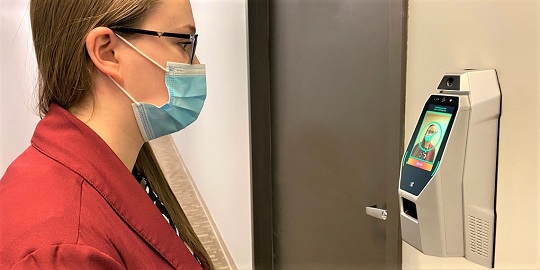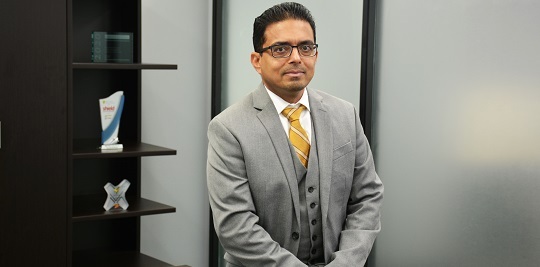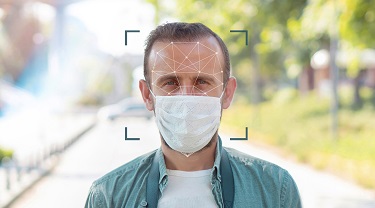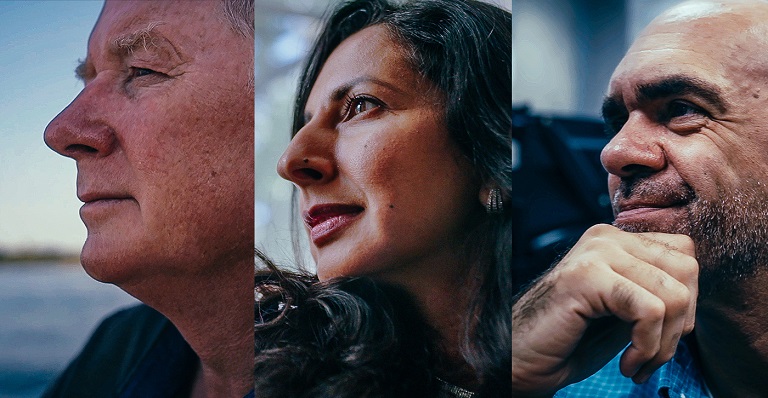Canadian biometrics company innovates its authentication tech to help get people around the world back to work and play, safely
Heading into 2020, Invixium was a company on the rise.
The Toronto-based business specialized in biometrics technology that scans and measures our faces and fingerprints (or finger vein patterns) to provide a secure, fast and reliable way of authenticating individuals – much like the thumb or face recognition functions found on phones.
Invixium’s competitive edge was superior usability, design, customer experience and internet readiness. Like Apple with the iPhone, their approach was to take existing technology, like a fingerprint sensor, and make it better looking, smarter and more connected, then, use aggressive and creative marketing to spread the word.
The approach was working. Over the last four years the company had posted a 40% Compound Annual Growth Rate (CAGR) in an industry that has an average growth rate of 15%. Their success was global as well, with exports to markets like India, the Middle East and the U.S. accounting for 99% of their revenue.
The majority of these sales were in the company’s line of fingerprint identification products, which is the most common application of biometrics for access control.
So, when COVID-19 hit, a company that had been on the rise now had a problem.
“All of a sudden… nobody wanted to touch anything,” says Invixium founder and CEO, Shiraz Kapadia. “The fingerprint market went quiet. For us, this dawned the realization that it’d be hard to convince anyone to touch anything again, so we needed to shift focus from our bread and butter product to touchless.”
Fortunately, Invixium had already started this shift. In 2018, the company had developed a touchless facial recognition product called IXM TITAN, which at the time responded to the growing trend in the industry towards more touchless access. This would give them a head start on their pandemic business pivot, but there was more to it. The company recognized in 2020 that their technology could be used for more than just checking identity. It could also check wellness.
“We were quickly able to add elevated body temperature checks to our devices and ensure that it wasn’t intrusive. Not only could TITAN do facial recognition within one second, but it could also check temperature and do this without the individual ever having to remove their mask,” says Kapadia.

This innovation is what enabled Invixium to continue its upward trajectory in 2020. And, Kapadia believes, it will be an important line of business in a post-pandemic marketplace.
“After so much time working from home and social distancing, we don’t expect employees will just stroll back into populated workplaces at the first sign of the pandemic improving,” says Kapadia. “Employers will need to introduce measures that will give their workforce a sense of security and comfort.”
EDC Investment
It was Invixium’s innovation that attracted the attention of EDC’s investment matching program, which was launched in 2020 as part of Canada’s broader economic response to COVID-19.
The program provides capital to small-and-medium-sized exporters by matching up to $5 million of investment from venture capital, private equity, and corporate investment partners. Invixium was among the first companies to receive funding through the program, with EDC entering a $3 million financing round alongside McRock Capital, BDC Capital and Connecticut Innovations.
“Invixium exemplifies the Canadian innovation that EDC is looking to support, especially during this current crisis when we’re focused on bringing liquidity into the market,” says EDC’s Executive Vice President and Chief Business Officer, Carl Burlock. “When COVID-19 hit, Invixium turned their focus to a product that will help keep people safe in their workplaces. We’re looking forward to working with the company as they grow and benefit from our investment matching program.”
The investment wasn’t EDC’s first time working with Invixium. In 2015, EDC indirectly invested in the company through its fund investment in McRock Capital. It also provided Invixium with a guarantee in 2018 to help facilitate a particularly complex transaction in the UAE: The company had received a $1.7 million order, one of their largest to date (at the time). To be able to fulfill an order of that size, Invixium required an advance payment from their buyer, and to get that, they needed an advance payment guarantee from their bank. Securing one would have required Invixium to put up cash as collateral, and that would have tied up a significant amount of their working capital. EDC was able to help by providing a guarantee to Invixium’s bank, essentially taking the cash collateral requirement off the table and freeing up Invixium to fulfill the order.
What’s next
The experts seem to believe that events like COVID-19 could become more frequent in the future. They cite factors like increased global travel, urban density, climate change and shrinking divides between people and wildlife as the main reasons. Because of this, Kapadia believes that health monitoring will continue to be an important factor in biometrics and access control.
“We intend to keep expanding our touchless product portfolio, adding wellness features like oxygen and respiration level checks, all to make sure that people can be appropriately screened before entering a place,” says Kapadia.
“We’re also moving beyond just workplace access and looking more closely at visitor access for venues like stadiums and theatres. In the same way that people will be reluctant to return to work unless there are health checks in place, they won’t want to go to big concerts or events either. We’re looking to tweak our tech and software for those uses.”
Two pieces of advice for exporters from Invixium Founder and CEO Shiraz Kapadia

- Early on, you need to spend very responsibly and stay focused. You need to know what markets you want to focus on because opportunities can pop up everywhere and you don’t want to get overstretched. Once you have adequate capital in the bank, then take on more, but only then.
- When entering new markets, understand that there is no ‘one-size-fits-all’ approach. If you’re doing business in India for example, it’s extremely important that you partner with local companies and have allies on the ground who know the market. Your North America strategy won’t work well there, nor will it work in places like Europe and the Middle East. You need to have a regionalized approach to international business.






